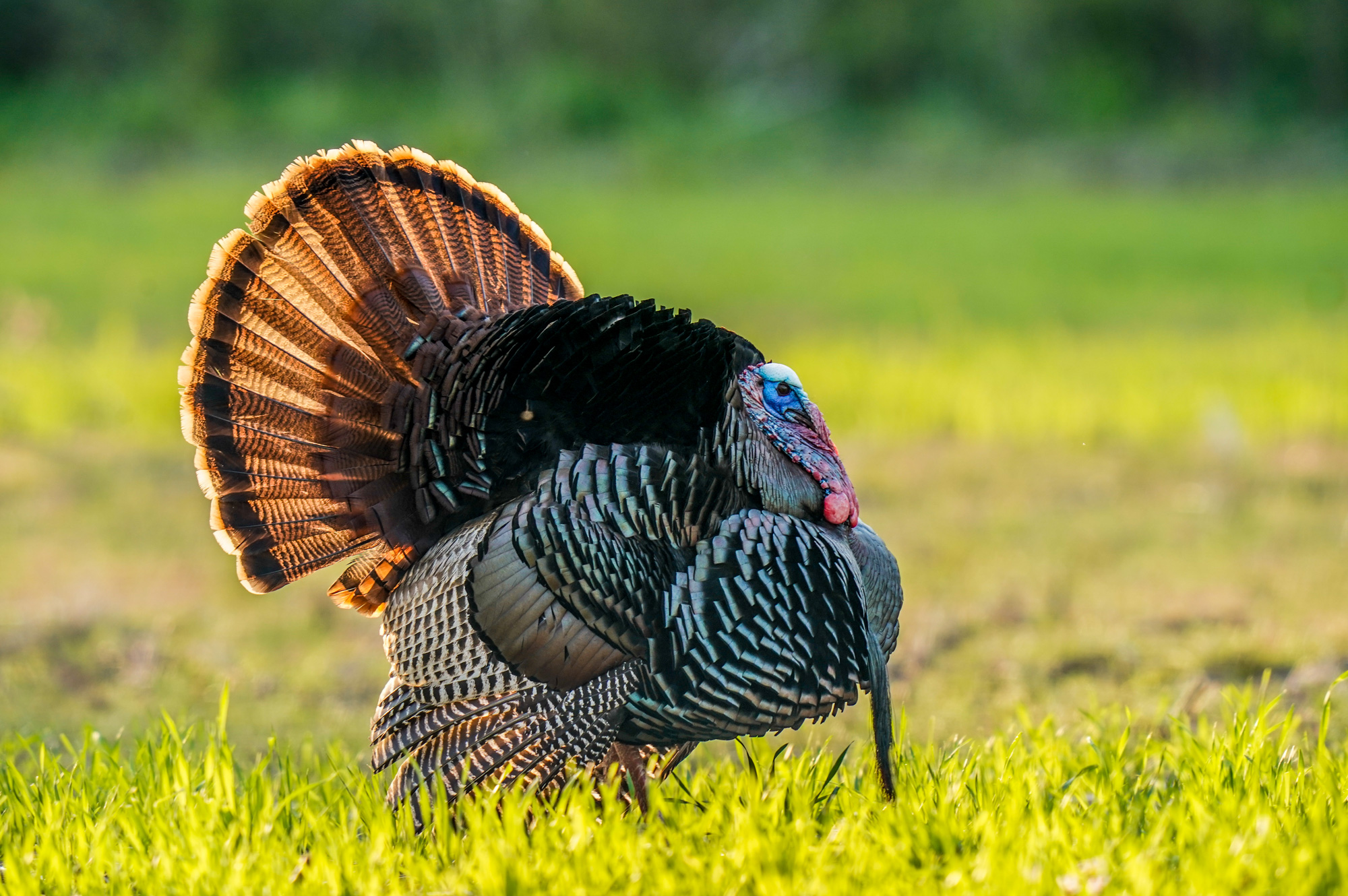Why the Strut?
Why are humans, and turkeys alike, so fascinated with gazing upon all 18 tail feathers of a puffy-fanned gobbler? And how, exactly, is the species capable of producing such a display?
If you’re a turkey hunter, chances are you’ve seen a strutting turkey. And, it’s likely you live on the high of seeing another. So why are humans, and turkeys alike, so fascinated with gazing upon all 18 tail feathers of a puffy-fanned gobbler? And how, exactly, is the species capable of producing such a display?
Certified wildlife biologist and retired regional biologist for the NWTF, Bob Eriksen, explains the science behind the strut.
“Strutting is an instinctive or innate behavior,” Eriksen said. “The word is used to describe the courtship display of the wild turkey.”
The displays range from ornate to simple, and all are designed to allow the male to show off his plumage and colors in hopes of suitably impressing a female to result in mating.
Folks generally associate strutting with the mating season, but the same display has other meanings in different situations.
“Outside of the breeding season, strutting is often used as a show of dominance when performed in the presence of other males,” Eriksen said. “Optimistic gobblers also may perform the display in the presence of hens outside the breeding season in the vain hope of stimulating a breeding session.”
Hens also are capable of strutting and will do so to show dominance or, occasionally, in response to a predator threatening a brood.
Characteristics of the Strut
If you’re not a turkey hunter, you may be wondering what a strutting turkey looks like. The strut of a wild turkey consists of five main components:
- Turkeys will drop their wings down to allow the primary wing feathers to touch the ground.
- The bird will hold its tail in a vertical position and spread its tail feathers to form a fan.
- The gobbler will place all the back and breast feathers in an erect position, making him appear larger.
- The head, naked skin and caruncles of a wild turkey may range from blue to bright red or flesh tone. The bird’s crown is usually pure white.
- The bird will bring its head and neck down into an “s” shape and elongate the snood (or leader) near the base of its beak.
Each of the above components signifies a strut, and during the display, birds typically take a few quick steps, shake and issue two sounds – a sharp “huff” or spitting sound and a deep drumming sound.
How do they do it?
The ritual looks as unique as it sounds, but still leaves us wondering, how do they do it?
“At the base of each feather there are small muscles that provide the ability for birds to move their feathers,” Eriksen said. “Those muscles are connected to other very small muscles within the skin. When a turkey struts, it contracts the muscles that control feather position, causing the body feathers to stand erect.”
A similar concept holds true for a group of muscles at the base of the tail and muscles within their wings.
“Wild turkey gobblers have the ability to relax and contract small blood vessels in the skin of the head and neck causing changes in the color of the skin,” Eriksen said. “Blood vessels and muscles also control the lengthening and contraction of the snood.”
When do they do it?
Contrary to popular belief – and what seems like 98 percent of all photographed turkeys – the birds spend the majority of their time in a relaxed, non-strutting position.
“Strutting can and does take place occasionally throughout the year, but is most common prior to the breeding season to determine dominance and pecking order and during the breeding season to identify receptive hens,” Eriken said. “When the birds do strut, they may do so for a few seconds or for hours at a time, depending on the situation.”
Where do they do it? (And why it matters.)
A particular gobbler may strut in an open area in the corner of a field, whereas another might choose an old logging road or a flat-topped ridge. Turkeys strut anywhere they please, but according to Eriksen, they usually pick sites that share a couple of attributes.
“The sites usually receive good sunlight, are open enough for gobblers to observe approaching hens or danger and have good acoustics so the gobbler can be heard from a long distance away, if he chooses to sound off,” he said.
When a gobbler is successful at attracting and meeting hens at a location, he may return to that site on a regular basis to display and await the arrival of hens. Returning regularly establishes the spot as a “strut zone.”
Preseason scouting can reveal potential strut zone locations to an alert hunter. Check for signs in the form of scratching, tracks or even lines in the dirt, sand or snow made by a strutter to identify a bird’s favorite strut zone. Finding one may be the clue you need to punch your tag this upcoming season.
Now that you know where, why and when turkeys strut, you may just look at them a little different the next time one decides to flaunt what God gave him (or on a rare occasion, her).
